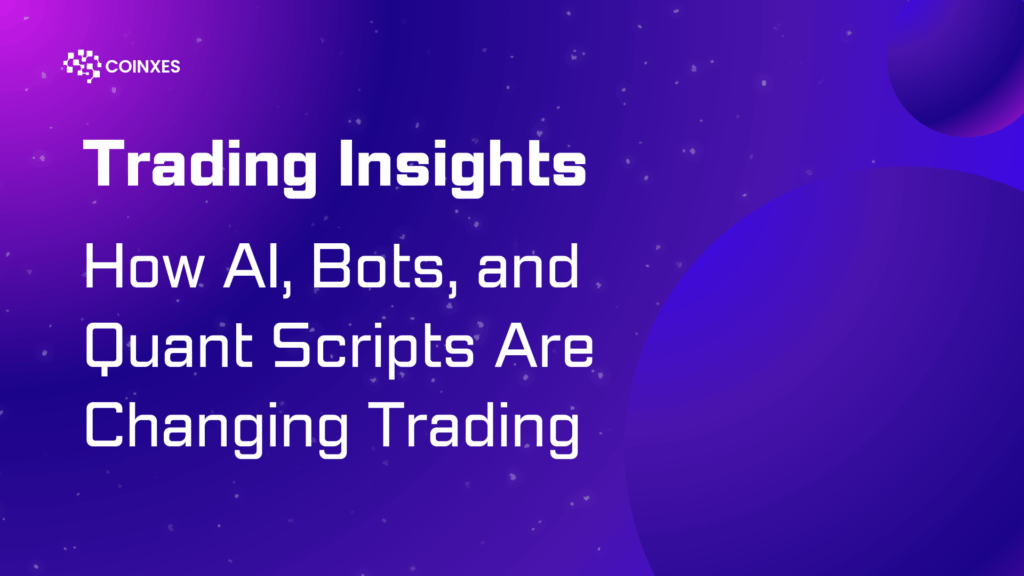Trading Insights: How AI, Bots, and Quant Scripts Are Changing Trading
The financial markets are undergoing a seismic shift. What once required a trader’s intuition and manual execution is now dominated by artificial intelligence (AI), automated trading bots, and quantitative (quant) scripts. These technologies are reshaping how individuals and institutions approach trading, offering unprecedented speed, precision, and scalability. Whether you’re a retail investor or a hedge fund manager, understanding these tools is critical to staying competitive in today’s fast-paced markets.
The Rise of AI in Trading: Smarter Decisions, Faster Execution
Artificial intelligence has emerged as a game-changer in trading, leveraging machine learning (ML) and deep learning to analyze vast datasets and identify patterns invisible to the human eye.
How AI Transforms Trading
- Predictive Analytics: AI models process historical price data, news sentiment, social media trends, and macroeconomic indicators to forecast market movements. For example, hedge funds like Renaissance Technologies use AI to predict stock price swings with remarkable accuracy.
- Algorithmic Trading: AI-driven algorithms execute trades at lightning speed, capitalizing on arbitrage opportunities or fleeting market inefficiencies.
- Risk Management: AI assesses portfolio risks in real time, adjusting positions to mitigate losses during volatile market conditions.
Real-World Example: AI in Crypto Trading
Platforms like Bybit and Binance now offer AI-powered tools that analyze crypto market sentiment using natural language processing (NLP). These tools help traders anticipate Bitcoin or Ethereum price movements by parsing tweets, news, and forum discussions.
Trading Bots: Automation for 24/7 Market Participation
Automated trading bots have democratized access to high-frequency trading (HFT) strategies, allowing even retail traders to compete with institutional players.
Types of Trading Bots
- Arbitrage Bots: Exploit price discrepancies across exchanges. For instance, a bot might buy Bitcoin on Exchange A at $30,000 and sell it on Exchange B at $30,100.
- Market-Making Bots: Place buy and sell orders to profit from bid-ask spreads.
- Trend-Following Bots: Use technical indicators like moving averages to ride momentum in stocks, forex, or cryptocurrencies.
Benefits of Trading Bots
- 24/7 Operation: Markets like forex and crypto never sleep, and bots ensure you don’t miss opportunities.
- Emotion-Free Trading: Bots execute predefined strategies without fear or greed influencing decisions.
- Backtesting: Optimize bot performance by testing strategies against historical data.
Case Study: Forex Bots on MetaTrader
MetaTrader’s Expert Advisors (EAs) are among the most popular trading bots. Users can code custom scripts in MQL4/MQL5 or purchase prebuilt bots from marketplaces like the MetaTrader Marketplace. These bots execute scalping strategies, capturing tiny profits from rapid price fluctuations.
Quantitative Scripts: The Power of Data-Driven Strategies
Quantitative trading relies on mathematical models and scripts to identify profitable trades. Quant scripts—often written in Python, R, or MATLAB—automate everything from portfolio optimization to high-frequency trading.
Key Applications of Quant Scripts
- Algorithmic Trading: Quant scripts execute trades based on predefined rules. For example, a script might buy S&P 500 futures if the Relative Strength Index (RSI) dips below 30 (oversold territory).
- Portfolio Optimization: Tools like Modern Portfolio Theory (MPT) use quant models to balance risk and return across assets.
- Big Data Analytics: Quants analyze alternative data sources (e.g., satellite imagery of retail parking lots) to predict earnings reports or commodity demand.
Example: Python in Quant Trading
Python libraries like Pandas, NumPy, and Backtrader enable traders to build and test complex strategies. A quant might use Python to backtest a pairs trading strategy, exploiting correlations between two stocks in the same sector.
Challenges and Risks: The Dark Side of Automation
While AI, bots, and quant scripts offer immense potential, they also come with risks:
- Overfitting: Models trained on historical data may fail in unpredictable markets.
- Market Manipulation: Bots can inadvertently amplify flash crashes by reacting to false signals.
- Technical Failures: Connectivity issues or coding errors can lead to catastrophic losses.
- Regulatory Scrutiny: Regulators like the SEC are tightening rules around AI-driven trading to ensure market fairness.
The Future of Trading: What Lies Ahead?
The integration of AI, bots, and quant scripts is just the beginning. Emerging technologies like quantum computing and blockchain-based decentralized finance (DeFi) will further disrupt trading.
Trends to Watch
- AI-Powered Robo-Advisors: Platforms like Betterment and Wealthfront use AI to offer personalized investment advice, blurring the line between retail and institutional trading.
- Decentralized Trading Protocols: DeFi platforms like Uniswap allow bots to execute trades on blockchain networks without intermediaries.
- Edge Computing: Processing data closer to the source (e.g., stock exchange servers) will reduce latency for HFT bots.
Conclusion: Embrace the Revolution or Risk Obsolescence
The trading landscape is evolving rapidly. AI, bots, and quant scripts are no longer niche tools—they’re essential for anyone serious about profiting in modern markets. By automating analysis, execution, and risk management, these technologies empower traders to make faster, smarter decisions.
